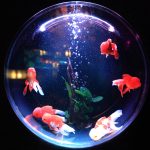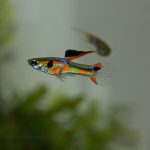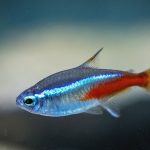Caring for Goldfish: A Complete Guide
Goldfish make popular and beautiful pets, but they require proper care to thrive and live a healthy life. This thorough article will provide you all the knowledge you need to maintain the welfare of your goldfish, whether you are a novice or a seasoned fish keeper.
Introduction to Goldfish Care
Goldfish are members of the carp family and are known for their vibrant colors and graceful swimming. They come in various shapes and sizes, including common goldfish, fancy goldfish, and koi. Proper care involves creating the right environment, providing a balanced diet, and ensuring their overall well-being.
Choosing the Right Tank and Equipment
The first step in caring for goldfish is selecting an appropriate tank and equipment. Consider the following factors:
Tank Size and Shape
Goldfish require ample space to swim and grow. A general rule of thumb is to provide a minimum of 20 gallons of water per goldfish. Avoid small bowls as they restrict their movement and compromise water quality.
Filtration System
A reliable filtration system is crucial for maintaining water quality. Look for a filter that can handle the volume of your tank and efficiently remove waste and toxins.
Heating and Lighting
Goldfish are cold-water fish and can tolerate a wide range of temperatures. However, they still benefit from a stable temperature and lighting conditions. Consider a heater and appropriate lighting to promote their well-being.
Setting up the Goldfish Tank
Once you have the necessary equipment, it’s time to set up the goldfish tank. Follow these steps:
Adding Water
Fill the tank with dechlorinated water. Avoid using tap water directly as it may contain harmful chemicals. Use a water conditioner to neutralize chlorine and chloramine.
Adding Gravel and Decorations
Place a layer of aquarium gravel on the tank bottom. Gravel provides a natural habitat for beneficial bacteria and adds aesthetic appeal. Add decorations, such as rocks and plants, to create hiding spots and a stimulating environment.
Cycling the Tank
Cycling the tank establishes a healthy balance of beneficial bacteria. This process breaks down harmful ammonia into less toxic substances. Use an aquarium test kit to monitor ammonia and nitrite levels during the cycling process.
Feeding Goldfish
Proper nutrition is essential for the well-being of your goldfish. Consider the following guidelines:
Types of Goldfish Food
Goldfish thrive on a balanced diet consisting of high-quality pellets or flakes specially formulated for their nutritional needs. Supplement their diet with occasional treats like frozen or live foods.
Feeding Schedule
Feed your goldfish small portions two to three times a day. Avoid overfeeding, as it can lead to health issues and water pollution.
Avoiding Overfeeding
Goldfish have a voracious appetite, but it’s crucial to feed them in moderation. Overfeeding can cause digestive problems, bloating, and poor water quality. Remember, it’s better to underfeed than overfeed.
Maintaining Water Quality
Regular maintenance is vital for the health of your goldfish. Follow these guidelines:
Regular Water Changes
Perform partial water changes every week to remove accumulated toxins and maintain water quality. Aim to replace 20-30% of the water. Use a siphon to vacuum debris from the gravel.
Testing Water Parameters
Regularly test water parameters, including ammonia, nitrite, nitrate, and pH levels. This helps you identify any imbalances and take corrective measures promptly.
Monitoring Ammonia and Nitrite Levels
Ammonia and nitrite are highly toxic to goldfish. Keep ammonia and nitrite levels at zero by maintaining a matured and cycled tank. Use a water conditioner that neutralizes ammonia.
Preventing Diseases in Goldfish
Prevention is key when it comes to diseases in goldfish. Take the following measures:
Quarantine Tank
Before introducing new fish to your main tank, quarantine them in a separate tank. This helps prevent the spread of diseases and allows you to observe and treat any potential issues.
Proper Hygiene and Cleaning
Maintain good hygiene practices when handling the tank and equipment. Avoid introducing contaminants and regularly clean the tank, filter, and decorations using non-toxic cleaning agents.
Recognizing Signs of Illness
Be vigilant for signs of illness in your goldfish, such as changes in appetite, abnormal swimming patterns, discoloration, or visible parasites. Consult a veterinarian experienced in fish care if you notice any concerning symptoms.
Handling and Interacting with Goldfish
Goldfish are curious and social creatures. Follow these tips for safe handling and interaction:
Safe Netting and Handling Techniques
When catching or netting your goldfish, use a soft net to avoid injuring their delicate fins. Gently guide them into the net and handle them with wet hands to prevent damage to their protective slime coat.
Bonding with Your Goldfish
Interact with your goldfish regularly to establish trust and bond with them. Spend time near the tank, talk to them, and occasionally offer treats. This helps them become more comfortable with your presence.
Breeding Goldfish
Breeding goldfish can be a rewarding experience. Consider the following guidelines:
Creating the Right Conditions
To encourage breeding, provide your goldfish with an environment that simulates their natural habitat. Maintain appropriate water temperature, quality, and lighting conditions.
Identifying Male and Female Goldfish
Differentiating between male and female goldfish can be challenging, especially with young specimens. Observe physical characteristics such as body shape, size, and fin shape to determine their sex.
Caring for Fry (Baby Goldfish)
If successful, your goldfish may produce fry. Prepare a separate tank with suitable filtration and feeding options for the newborn fry. Offer them a diet of specialized fry food until they can consume regular fish food.
Common Mistakes to Avoid
To ensure the well-being of your goldfish, avoid the following common mistakes:
Overcrowding the Tank
Overcrowding stresses goldfish and leads to poor water quality. Provide adequate space and consider the adult size of your fish when selecting the tank.
Inadequate Filtration
Insufficient filtration can result in high ammonia and nitrite levels, endangering the health of your goldfish. Invest in a quality filter suitable for the size of your tank.
Inconsistent Water Temperature
Fluctuating water temperatures stress goldfish and weaken their immune system. Use a heater to maintain a stable and appropriate temperature range for your goldfish species.
Conclusion
Caring for goldfish requires attention to their specific needs, including providing a suitable tank, maintaining water quality, offering a balanced diet, and recognizing potential health issues. By following the guidelines in this complete guide, you can create a thriving environment for your goldfish and enjoy their beauty for years to come.
FAQs
1. How often should I feed my goldfish? Goldfish should be fed small portions two to three times a day. Monitor their appetite and adjust the feeding schedule as necessary.
2. Can I keep goldfish in a bowl? Goldfish require a spacious tank with proper filtration. Bowls are not suitable for their well-being as they restrict their movement and compromise water quality.
3. How long do goldfish live? With proper care, goldfish can live for many years. Some varieties can live up to 20 years or even longer.
4. Do goldfish require a heater? While goldfish are cold-water fish and can tolerate a range of temperatures, they still benefit from a stable and appropriate water temperature. A heater can help maintain optimal conditions.
5. What are some common diseases that affect goldfish? Goldfish can be susceptible to diseases such as ich, fin rot, swim bladder disorder, and parasites. Regular observation, proper nutrition, and maintaining water quality can help prevent these issues.




